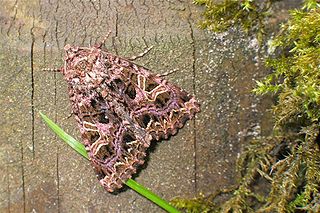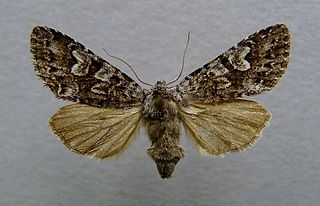
The fieldfare is a member of the thrush family Turdidae. It breeds in woodland and scrub in northern Europe and across the Palearctic. It is strongly migratory, with many northern birds moving south during the winter. It is a very rare breeder in Great Britain & Ireland, but winters in large numbers in the United Kingdom, Southern Europe, North Africa and the Middle East. It is omnivorous, eating a wide range of molluscs, insects and earthworms in the summer, and berries, grain and seeds in the winter.

The lesser grey shrike is a member of the shrike family Laniidae. It breeds in South and Central Europe and western Asia in the summer and migrates to winter quarters in southern Africa in the early autumn, returning in spring. It is a scarce vagrant to western Europe, including Great Britain, usually as a spring or autumn erratic.

The long-tailed forest shrew, or long-tailed mouse shrew, is a species of mammal in the family Soricidae. It is endemic to South Africa, where its natural habitats are Mediterranean-type shrubby vegetation and swamps.
Tecmerium is a genus of moths in the family Blastobasidae.

Lygephila pastinum, the blackneck, is a moth of the family Erebidae. The species was first described by Georg Friedrich Treitschke in 1826. It is found in Europe and across the Palearctic Siberia, the Russian Far East, Japan and China.

Hydraecia micacea, the rosy rustic, is a moth of the family Noctuoidea. It is found across the Palearctic realm from Ireland to Siberia. It reaches Japan and is introduced to eastern USA, Quebec and Ottawa.

Sideridis rivularis, the campion, is a species of moth of the family Noctuidae. It is found in from the northern part of the Iberian Peninsula, through the whole of Europe. To the east, it is found in Central Asia and Siberia, up to Manchuria. To the south, it is found in the Mediterranean Sea region and parts of Asia Minor. In the Alps, it is found at up to 1,600 metres above sea level.

Pyrausta despicata, the straw-barred pearl, is a species of moth of the family Crambidae. It was described by Giovanni Antonio Scopoli in his 1763 Entomologia Carniolica.

Scoparia subfusca is a species of moth of the family Crambidae. It is found in Europe.

Scoparia ambigualis is a species of moth of the family Crambidae described by Friedrich Treitschke in 1829. It is found in Europe and Asia Minor and possibly in Guangdong and Shanxi in China.

Papestra biren, the glaucous shears, is a moth of the family Noctuidae. The species was first described by Johann August Ephraim Goeze in 1781. It is found in most of Europe, but not in the southern parts of the Iberian Peninsula, Italy and Greece. Outside of Europe it is found in Kashmir and through the Palearctic to Siberia, Central Asia, Amur, Kamchatka, the Russian Far East and Japan. It was introduced in Newfoundland in 1935 and has since then extended its range ever more southward within North America partly overlapping with Papestra quadrata(Smith, 1891). It rises to 2200 m above sea level in the Alps.

Agrochola helvola, the flounced chestnut, is a moth of the family Noctuidae. It was first described by Carl Linnaeus in his landmark 1758 10th edition of Systema Naturae. The species is found in most of Europe, north to Scotland and Fennoscandia up to the Arctic Circle, south to Spain, Sicily, Greece further east to the Middle East, Armenia, Asia Minor, western Turkestan and central Asia up to central Siberia.

Clepsis rurinana is a moth of the family Tortricidae. It is found in most of Europe, with the exception of Ukraine and part of the Balkan Peninsula, east to the Near East and the eastern part of the Palearctic realm. It is also present in the Indomalayan realm.

Nycteola revayana, the oak nycteoline, is a moth of the family Nolidae. The species was first described by Giovanni Antonio Scopoli in 1772. It is found from Europe and east across the Palearctic to Japan and India.
Tecmerium anthophaga is a moth in the family Blastobasidae. It is found in France, Portugal and Spain, as well as on Corsica and Sardinia.
Tecmerium mnemosynella is a moth in the family Blastobasidae. It is found in France.
Tecmerium perplexum is a moth in the family Blastobasidae. It is found in Hungary, Slovakia, Greece, Turkey and on Cyprus.
Tecmerium rosmarinella is a moth in the family Blastobasidae. It is found in France.
Taiteccopsis davisorum is a species of moth of the family Tortricidae. It is found in Nigeria.
Cnephasia hellenica is a species of moth of the family Tortricidae. It is found in Portugal, Spain, Italy, Bulgaria, Romania, Greece, Ukraine and the Near East.












